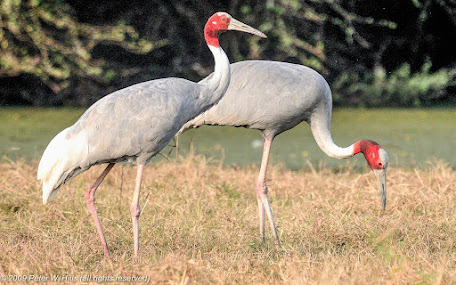This district has maximum number of Sarus Cranes in Uttar Pradesh
Etawah: The maximum number of Sarus Crane birds in Uttar Pradesh 3280 have been found in Etawah district. In this way, Etawah is on top among all the districts in the number of Sarus birds.
Etawah District Divisional Forest Officer Atul Kant Shukla said that in the census conducted on June 26 and 27, 3280 Sarus Cranes have been found in Etawah district, this number is the highest in any district of the state. After this number came to the fore, all the officers and wildlife experts of the forest department of Etawah are looking elated.
Shukla believes that the maximum number of stork birds found in Etawah district shows the love and protection of the people towards the Sarus Cranes.
The farmers and people of Etawah are sure that in view of the schemes being run by the state government towards the conservation of the Sarus, there is nothing wrong in saying that the people of Etawah have an emotional attachment to the conservation of this bird.
The result of this is being seen that today Etawah district of Uttar Pradesh has come at the top in the count of Sarus Cranes.
Sarus is considered symbols of marital fidelity
The sarus crane is easily distinguished from other cranes in the region by its overall grey colour and the contrasting red head and upper neck. They forage on marshes and shallow wetlands for roots, tubers, insects, crustaceans, and small vertebrate prey.
Like other cranes, they form long-lasting pair bonds and maintain territories within which they perform territorial and courtship displays that include loud trumpeting, leaps, and dance-like movements. In India, they are considered symbols of marital fidelity, believed to mate for life and pine the loss of their mates, even to the point of starving to death.
Habitat loss main threat to Sarus
The main threat to the Sarus crane in India is habitat loss and degradation due to draining the wetland and conversion of land for agriculture. The landscape of its historic range is rapidly changing due to construction of highways, housing colonies, roads, and railway lines. More recently, many deaths have been recorded due to collision with power lines. Also, due to the increase in agricultural land, Sarus cranes are left with no choice but to forage in these fields, and as a result ingest pesticides, which lead to poisoning.






Comments
Post a Comment